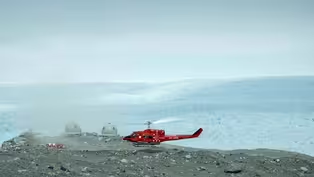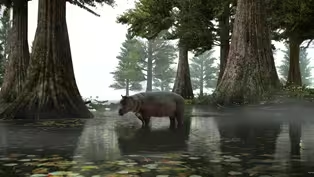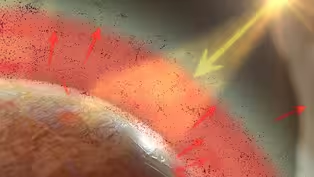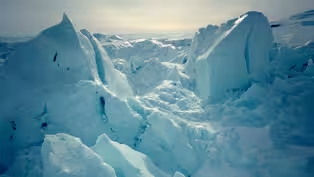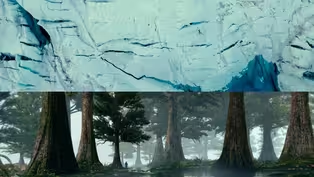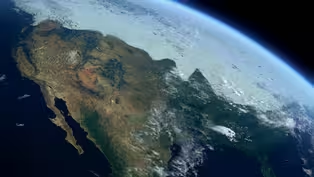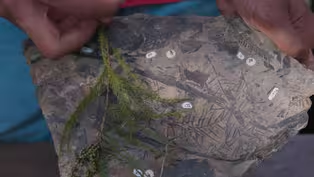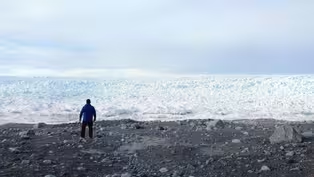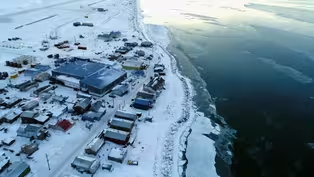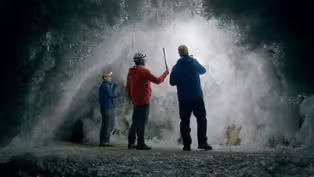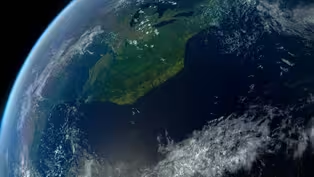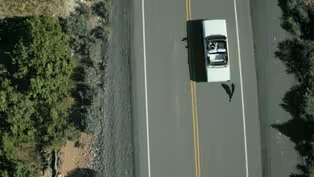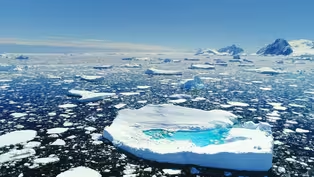
Why Are There Stone Tree Trunks in the Arctic?
Clip: Season 47 Episode 1 | 2m 50sVideo has Closed Captions
Fifty-million years ago these rocks were trees and this Arctic tundra was a steamy swap.
Ellesmere Island, high in the Canadian Arctic, is only 800 miles from the North Pole. 50-million years ago, the treeless hillside would have been completely different.
Problems playing video? | Closed Captioning Feedback
Problems playing video? | Closed Captioning Feedback
National Corporate funding for NOVA is provided by Carlisle Companies and Viking Cruises. Major funding for NOVA is provided by the NOVA Science Trust, the Corporation for Public Broadcasting, and PBS viewers.

Why Are There Stone Tree Trunks in the Arctic?
Clip: Season 47 Episode 1 | 2m 50sVideo has Closed Captions
Ellesmere Island, high in the Canadian Arctic, is only 800 miles from the North Pole. 50-million years ago, the treeless hillside would have been completely different.
Problems playing video? | Closed Captioning Feedback
How to Watch NOVA
NOVA is available to stream on pbs.org and the free PBS App, available on iPhone, Apple TV, Android TV, Android smartphones, Amazon Fire TV, Amazon Fire Tablet, Roku, Samsung Smart TV, and Vizio.
Buy Now
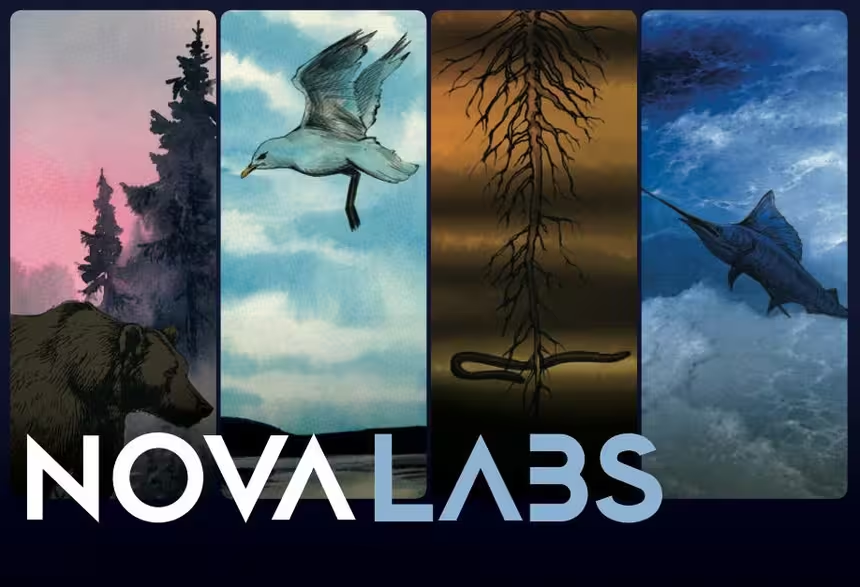
NOVA Labs
NOVA Labs is a free digital platform that engages teens and lifelong learners in games and interactives that foster authentic scientific exploration. Participants take part in real-world investigations by visualizing, analyzing, and playing with the same data that scientists use.Providing Support for PBS.org
Learn Moreabout PBS online sponsorship- This frozen tundra may look barren, but for me as a paleobotanist, this is geologic heaven.
(dramatic music) There are a few small arctic wildflowers and some scrappy ground cover, but the nearest living tree is 1000 miles south of here.
Finally, we reach what I've been looking for.
Wow.
Oh my God, there's some amazing stumps here.
Look at this.
Sticking outta the hillside are a bunch of weird brown rocks.
These are petrified tree stumps.
Geologists have dated these trees to around 50 million years ago.
Back then, this treeless hillside would've been completely different.
(gentle music) There's a lot of clues here to how this forest got to be the way it is.
The first is that all these stone trunks are surrounded by coal, black rock, which is a very strong signal that these trees, when they were growing, were growing in a swamp.
The second clue are these radiating roots.
In swamps, roots grow out and not down.
(gentle music) But what kind of trees were these?
(hammer tapping) These rocks are just chunky silt stones that are quite near the petrified forest, and I'm breaking them apart because I'm looking for fossil leaves.
If I can find the leaves that go with those trees, I can put that forest back together again.
Come to Papa.
(gentle music continues) (hammer tapping) Ah, now here we go.
Here's a closeup of that thing.
- What have you got?
- This is Metasequoia.
Little needles.
It's the dawn redwood.
This is conifer, and these whole sprigs will fall off as they've done here and land in the mud.
This used to be mud.
Now it's a rock that would go with those trunks at the petrified forest.
(gentle music) Together, these leaves and tree trunks give us a window into the past.
50 million years ago, this dried barren tundra was a warm, humid swamp, (water trickling) (insects chirping) covered with lotus plants, ferns, and metasequoia trees that were as tall as 150 feet.
(gentle music continues) (water trickling) The area covered in ice today was once a massive forest that stretched all the way up to the edge of the Arctic Ocean.
Water ran off the land, forming a surface layer of fresh water.
Instead of sea ice, the North Pole was covered in subtropical floating ferns.
(gentle music)
A Bird's-Eye View of Carbon Emissions
Video has Closed Captions
Clip: S47 Ep1 | 1m 56s | What if carbon dioxide pollution were solid carbon chunks? (1m 56s)
Fifty Million Years Ago, the Arctic Was a Warm Swamp
Video has Closed Captions
Clip: S47 Ep1 | 2m 7s | Drop yourself into a modern-day swamp, and that's what the ancient Arctic looked like. (2m 7s)
How Carbon Dioxide Warms Planet Earth
Video has Closed Captions
Clip: S47 Ep1 | 2m 32s | Carbon dioxide acts like a heat-trapping blanket, warming our planet. (2m 32s)
How Climate Has Shifted Over Millions of Years
Video has Closed Captions
Clip: S47 Ep1 | 2m 44s | Lake mud from the Russian Arctic tells us that Earth's climate has oscillated in the past. (2m 44s)
How Earth’s Climate Changed Over the Past 500 Million Years
Video has Closed Captions
Clip: S47 Ep1 | 3m 25s | Learn more about our planet’s Hothouse and Icehouse climates. (3m 25s)
How Humans Could Make Icehouse Earth into a Hothouse
Video has Closed Captions
Clip: S47 Ep1 | 4m 21s | Understand climate time. (4m 21s)
Plant Fossils Hint at Arctic's Swampy Past
Video has Closed Captions
Clip: S47 Ep1 | 3m 2s | Learn more about a lush forest that once dominated the Arctic. (3m 2s)
Video has Closed Captions
Preview: S47 Ep1 | 3m 19s | Paleontologist Kirk Johnson explores the dynamic history—and future—of ice at the poles. (3m 19s)
This Alaska Community is Losing Sea Ice to Climate Change
Video has Closed Captions
Clip: S47 Ep1 | 4m 47s | See how one small town’s survival is threatened by climate change. (4m 47s)
This Canadian Cave Has Been Frozen Since the Last Ice Age
Video has Closed Captions
Clip: S47 Ep1 | 3m 11s | Explore this spectacular, icy cave. (3m 11s)
What did the East Coast Look Like 3 Million Years Ago?
Video has Closed Captions
Clip: S47 Ep1 | 3m 21s | Scientists dig up ancient clams from the ocean 90 miles from the nearest beach. (3m 21s)
What if Carbon Left Your Tailpipe as Solid Chunks?
Video has Closed Captions
Clip: S47 Ep1 | 2m 12s | Together, all the cars on Earth would leave quite the pile of carbon behind—every day. (2m 12s)
What’s Causing Greenland’s Biggest Glacier to Melt?
Video has Closed Captions
Clip: S47 Ep1 | 2m 4s | Warming ocean water is eating away at Greenland's glaciers from below. (2m 4s)
Why Trees Are Living Climate Records
Video has Closed Captions
Clip: S47 Ep1 | 1m 29s | Trees have an environmental record etched into their very wood. (1m 29s)
Providing Support for PBS.org
Learn Moreabout PBS online sponsorship
- Science and Nature

Capturing the splendor of the natural world, from the African plains to the Antarctic ice.













Support for PBS provided by:
National Corporate funding for NOVA is provided by Carlisle Companies and Viking Cruises. Major funding for NOVA is provided by the NOVA Science Trust, the Corporation for Public Broadcasting, and PBS viewers.


